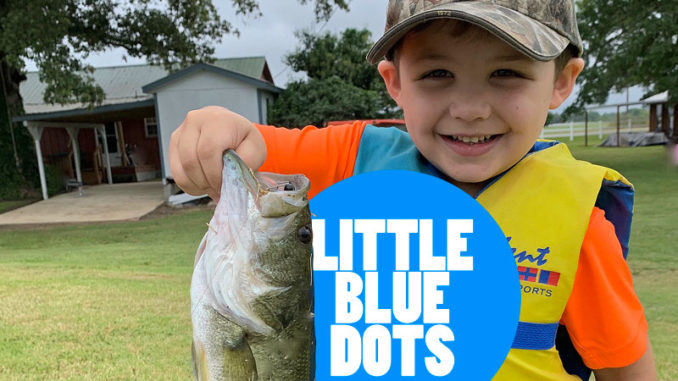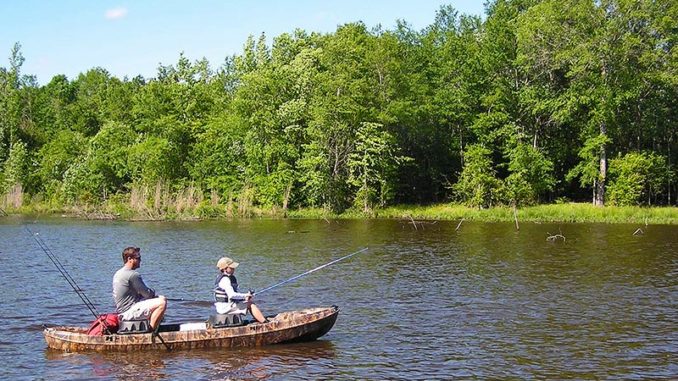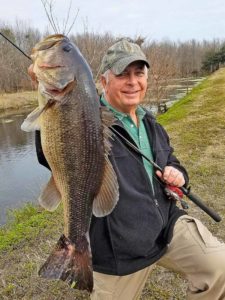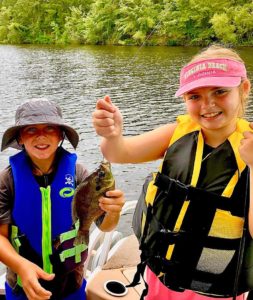
Small fishing ponds and lakes provide plenty of good times for the savvy angler
Look at a map of most any Louisiana parish, and you’ll see little blue “dots” everywhere.
They come in all shapes and sizes. Some are in the woods. Some are in open fields.
The little blue dots are small fishing ponds and lakes, and they are full of big fishing opportunities. In fact, many young anglers land their first fish from them.
Many ponds and small lakes can best be fished from the bank, but some larger ones are conducive to fishing in boats, everything from small aluminum bass boats to jon boats powered by electric motors or wooden paddles. They are especially attractive to kayak and canoe fishermen.

So how do you get the biggest bang out of your small water? Follow the same approach you would in bigger lakes. Answer these two questions and you’ll find the fish.
- Where is the bait?
- Where is the cover?
Grass is greener
It’s kind of ironic, but if you watch anglers fish small lakes, you’ll see the natural inclination for fishermen on the bank to cast out as far as they can to catch fish. Then you’ll see somebody in a boat, and they go around the edge, fishing the bank.
That’s the “grass is greener” approach.
But the truth is, except during the coldest month, most fish in small lakes are in shallower water. That’s where most of the cover is, and unless something moves them out, the bait will, for the most part, be tight in to brush tops, laydowns and aquatic vegetation. Some small lakes have man-made fish-holding structures that attract bait and fish.

“Waters that don’t have current usually stratify in the summer,” said Mike Wood, whose Mike Wood Services manages small lakes for landowners. “That means a layer of warm, oxygenated water forms over a layer of cooler water without dissolved oxygen. Fish can swim down in the sour water, but they can’t stay long. The layers mix with seasonal cooling called the ‘fall turnover’ and that also affects where the fish go this time of year.”
Wood (318-376-3474) said a healthy, small lake usually has a balanced fish population and the essentials of good quality water, a firm bottom and a low to moderate coverage of vegetation. A balanced fish population includes a mix of small, medium and large fish of every species. For the most part, small lakes are best for bream, bass and catfish. Crappie can often take over a small lake and stunt the growth of everything.
Tips for small-lake fishing
Wood is also a fisherman and his best tips for small-lake fishing start with bass.
“Stealth is the best approach for bass in small waters,” he said, noting that fish spook easily. “Smaller offerings and light line are usually more productive, too.
“I like to cover ground to find bream. They aren’t too finicky, and they like to hang out together. Put a Beetle Spin or a cricket in front of them, and they’ll cooperate. Ponds with catfish usually have feeders, and the fish congregate there. Drop a night crawler in or throw out baited noodles, and you’ll catch them.”

There’s also no better place to take youngsters fishing. They can either fish from the bank or have short, easy trips in smaller boats. It’s a good place to learn how to cast, fish with a cane pole and learn the basics of baits and finding fish without having to worry about anything else.
Building your own small fishing lake
Want to build your own small lake or large pond?
A farm pond or recreational pond can serve many purposes: a source of food, an aesthetic enhancement to property, a fishing opportunity, a swimming area, wildlife habitat, or a stock tank for livestock, irrigation and fire-fighting needs, according to the LSU AgCenter, which publishes a free booklet entitled “Management of Recreational and Farm Ponds in Louisiana”.
Here’s just one of the good tips this booklet offers.
“Although fish pond levees vary widely in eight from one site to another, they should be at least 6 to 8 feet high. A minimum average depth of 4 feet should be maintained throughout the year, and design specifications should make sure no part of the pond is less than 3 feet deep to avoid problems with rooted, aquatic vegetation. Conversely, water depths of more than 6 feet are generally of little use in Louisiana and do not increase overall fish production.”


